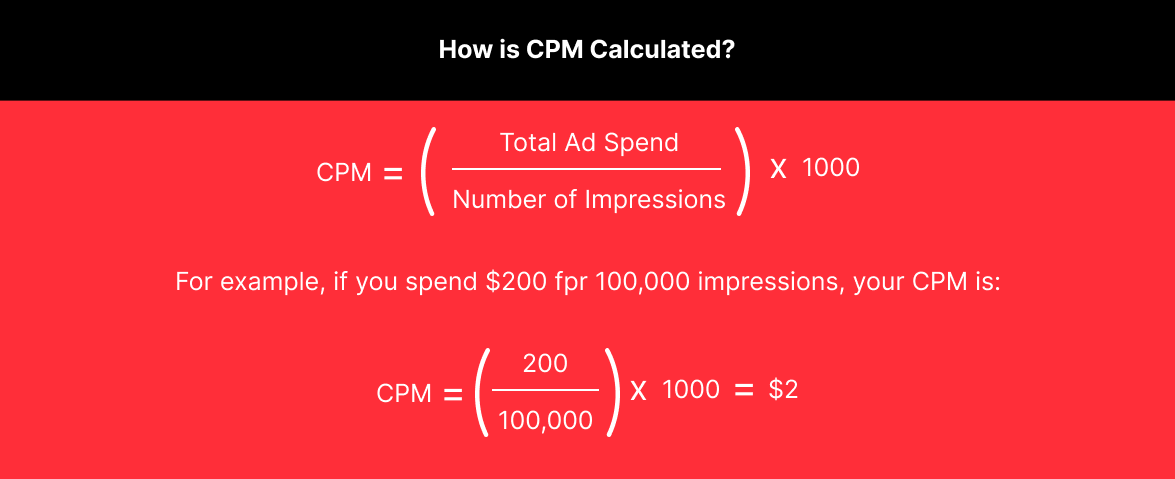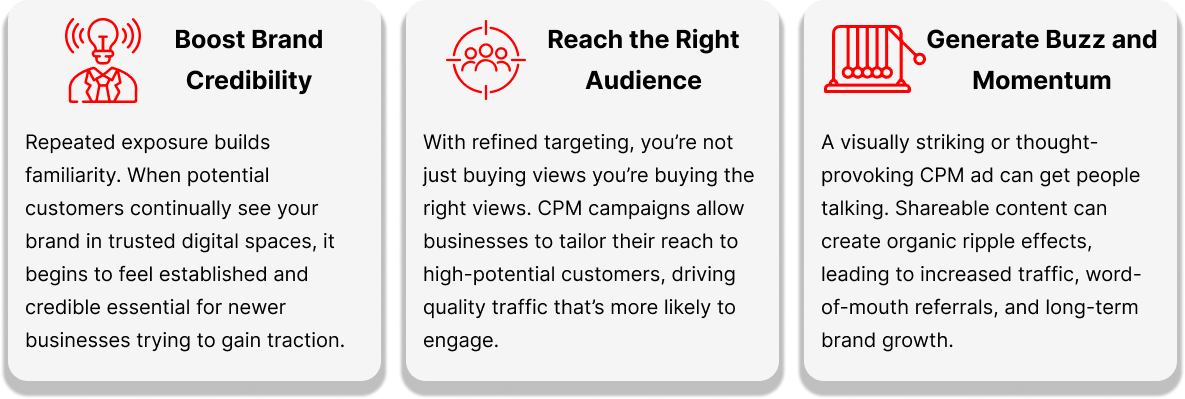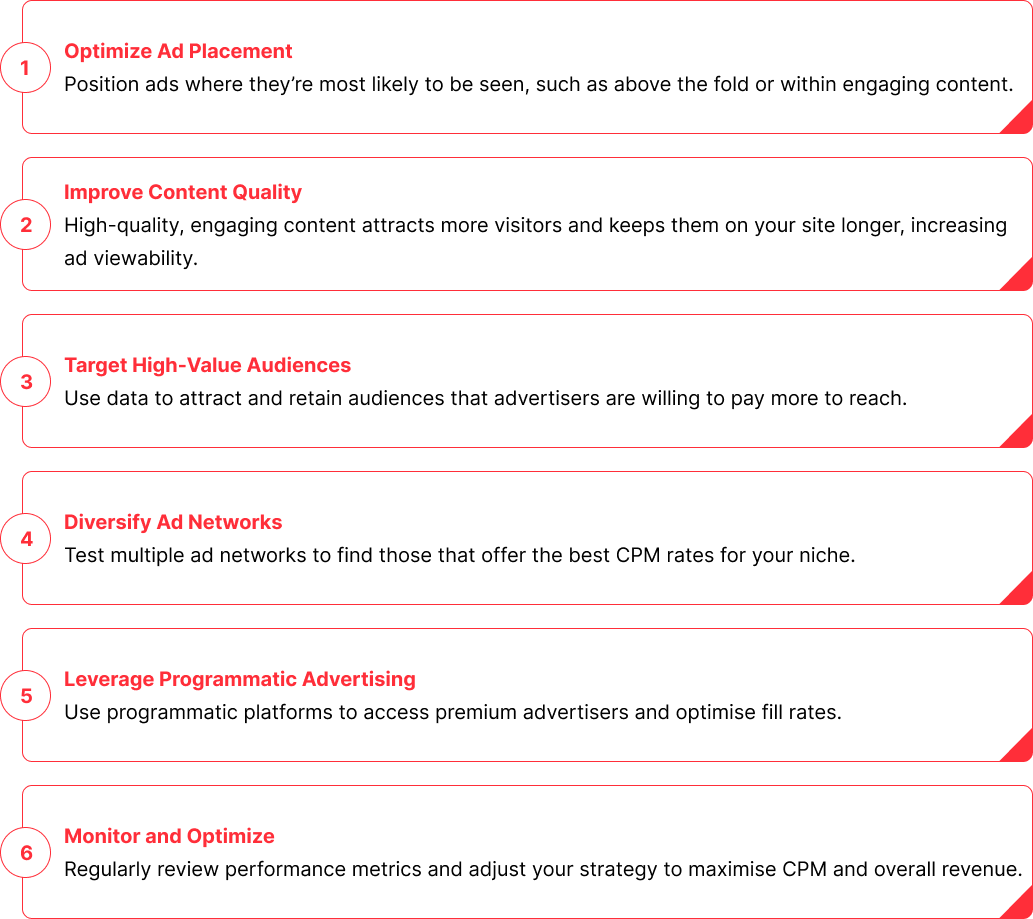- 16th May, 2025
- By Rob Lawson
Maximise Your Revenue: The Ultimate Guide to CPM Mastery

In the ever-evolving landscape of digital advertising, understanding foundational metrics is key to making informed decisions and few are as essential as CPM, or cost per thousand impressions. In this guide, we peel back the layers of CPM, tracing its roots from the golden age of radio and television to its modern-day applications across the vast digital ecosystem. With a conversational tone and a dash of historical context, we explore how this classic pricing model made its leap into online advertising, adapting to new technologies and audience behaviors along the way.
From early banner ads to today’s sophisticated programmatic platforms, we’ll examine how CPM fits into the broader strategy of reaching and resonating with your target audience. With insights into major players like Google and Facebook, tips for optimising campaigns, and a clear call to action for ongoing experimentation and improvement, this piece is your roadmap to navigating CPM with confidence and clarity.
Understanding CPM in Marketing
Hello, savvy marketers and business owners! Today, we're diving into the world of advertising metrics, and we are going to demystify one of the classic yet crucial terms you need to grasp: CPM, or cost per thousand impressions. The "M" might throw you off it's a nod to the Roman numeral for 1,000 but the concept is as modern as ever, with roots that stretch back to the golden age of radio and television.
In those bygone days, advertising space was bought and sold based on the estimated reach of a program, calculated through audience ratings. The price? A certain dollar amount per thousand viewers or listeners. This method, deeply entrenched in traditional media, smoothly transitioned into the digital realm, first championed by the very pioneers of print and broadcast who sought to conquer the internet.
An impression is counted each time your ad is displayed, regardless of whether the viewer interacts with it. This makes CPM a preferred model for campaigns focused on brand awareness and visibility, rather than direct conversions.

The Evolution of CPM in Digital Marketing
Imagine the early days of online advertising, where a news outlet ventures into the digital space, sprinkling banner ads across its virtual pages. These were the first forays into selling digital real estate by CPM. Advertisers paid for the number of times their banner was potentially seen, not by how many clicks it received. This sparked debate over its effectiveness after all, what if the ad was at the bottom of the page, unseen by users who never scrolled that far?
As the digital landscape evolved, so did the approach to selling ad space. Individual websites often struggled to manage their advertising, giving rise to third-party companies that aggregated ad inventory, offering a more streamlined solution for both publishers and advertisers.
Enter programmatic advertising, the sophisticated offspring of this evolution. This technology allows advertisers to target specific demographics age, gender, location, and even browsing habits – to deliver ads to the most receptive audiences across a vast network of websites. It's advertising with surgical precision, all made possible through advanced software algorithms.
Google, the titan of the internet, has mastered this domain, leveraging its massive market power and reach. They offer display advertising on their own properties and across a network of third-party sites. Their pricing is competitive, averaging $3.12 per thousand impressions on their display network, and a steeper $38.40 per thousand on their search network due to the higher intent of users there.
Meanwhile, Facebook, another advertising giant, averages $8.60 per thousand impressions. They've made significant changes to their algorithm, affecting how content is shared among connections. This means that without paying, your ads may only reach a fraction of your followers, prompting businesses to invest in paid reach to find and engage their target audience.
Benefits of CPM
When it comes to stretching your advertising dollars while maximising exposure, CPM (Cost Per Thousand Impressions) offers some distinct advantages. One of the most appealing aspects is cost efficiency CPM campaigns are generally more affordable than CPC (Cost Per Click) or CPA (Cost Per Action) models. This makes them especially attractive for businesses focused on brand awareness rather than immediate conversions. That said, your actual cost will depend on factors like ad placement and audience targeting. Premium sites and larger audiences often come with higher bids, but the trade-off is greater reach and visibility.
CPM campaigns shine when paired with smart targeting tools, especially on social media platforms like Facebook, where you can hone in on your ideal customer by age, interests, behaviors, and more. With a well-defined audience and a compelling message, CPM advertising becomes a rapid engine for awareness at a low cost per view. But the benefits go deeper:

Is CPM Still Effective?
Absolutely, CPM remains a highly effective strategy, especially when your goal is brand awareness. But like any smart marketing move, it thrives on testing and refinement. Start small with a clearly defined audience. Try different ad creatives, headlines, visuals, and landing pages to see what sticks.
Once you’ve nailed down what works, scale up gradually while keeping a close eye on your metrics. The key isn’t just getting seen it’s making sure those impressions are meaningful. With the right combination of targeting, creativity, and analysis, CPM can deliver real results at a cost that’s hard to beat.
Factors That Influence CPM Rates
Several factors can affect your CPM rates, including:
 | Ad Placement: Ads above the fold or in premium positions command higher CPMs. | |
 | Audience Targeting: Highly targeted audiences (by demographics, interests, or behaviors) may have higher CPMs due to increased competition. | |
 | Seasonality: CPM rates often rise during peak advertising seasons, such as holidays. | |
 | Ad Format: Rich media and video ads typically have higher CPMs than standard display banners. | |
 | Geography: Targeting users in countries with higher purchasing power (e.g., Australia, US, UK) often results in higher CPMs. |
Strategies to Increase Your CPM and Revenue
If you’re a publisher or website owner, increasing your CPM means more revenue for the same number of impressions. Here are proven strategies to boost your CPM:

Common Pitfalls to Avoid
While CPM is a powerful metric, it’s not without its challenges:

Key Takeaways
CPM advertising may be one of the oldest pricing models in the digital world, but it’s far from outdated. In today’s landscape where visibility, brand recall, and precision targeting are essential CPM continues to deliver strong value, especially for marketers focused on awareness and reach. By combining thoughtful audience segmentation with creative experimentation, you can maximise your ad budget while leaving a lasting impression.
If you're feeling uncertain as you navigate the digital advertising space, remember you don’t have to do it alone. Whether you're refining your strategy or scaling your efforts, teaming up with specialists like Digital Assassin can give your campaigns the edge they need. In a fast-moving environment like this, the right guidance can help unlock stronger returns and long-term success.
Thanks for joining us on this deep dive into CPM. With this knowledge in hand, you're ready to take on the digital advertising world with confidence and clarity.